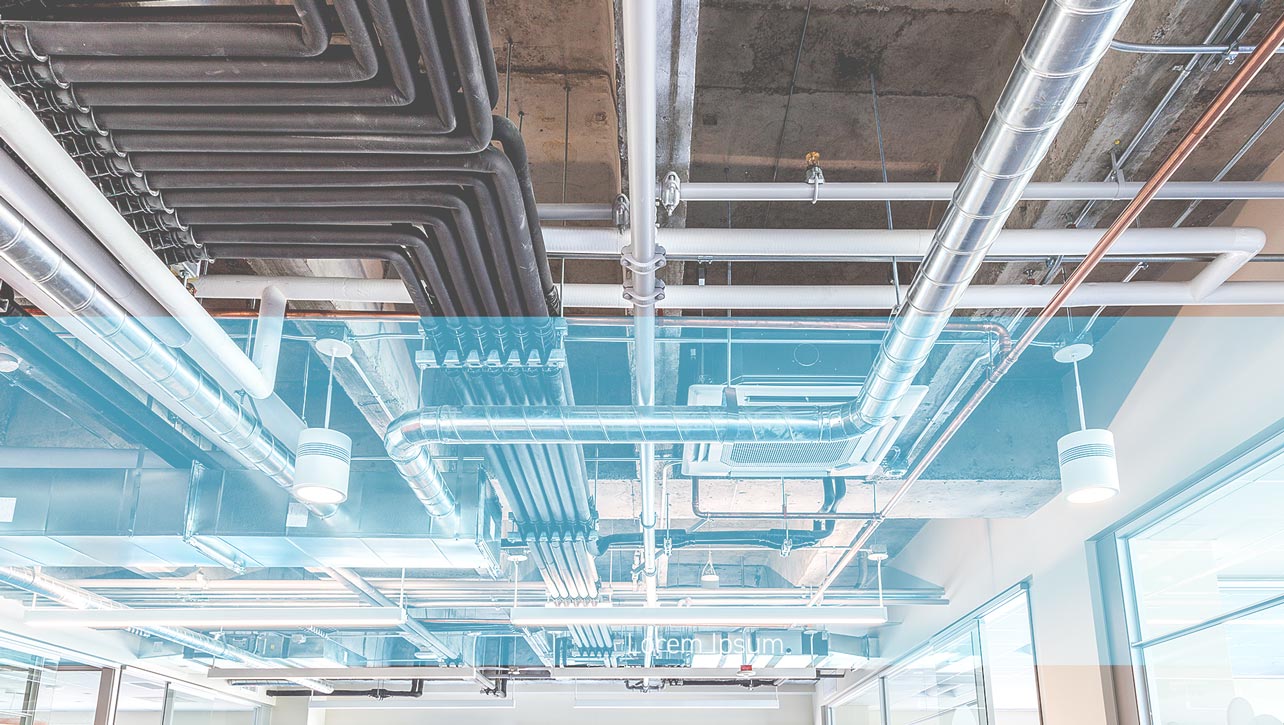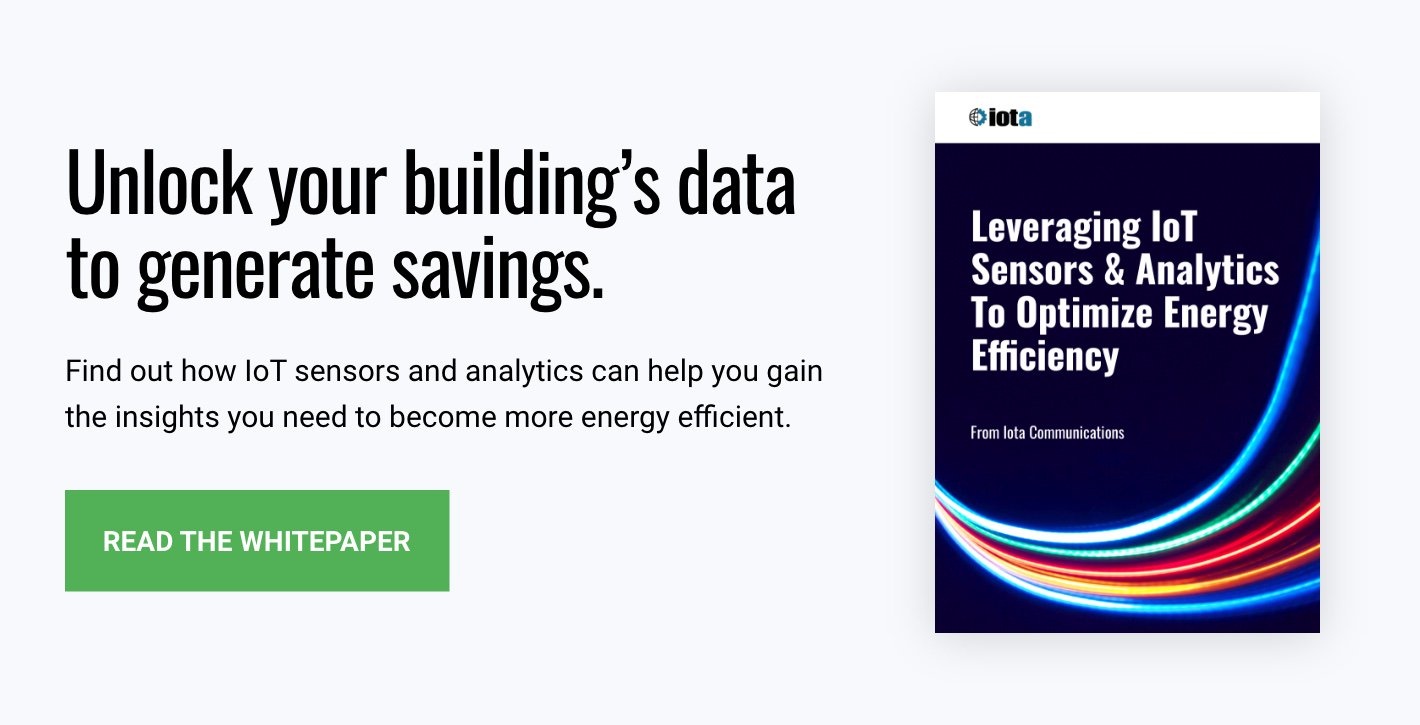The building a company is housed in is typically one of its most important assets. Its operations have a major impact on the bottom line, business activities depend on its continuous smooth functioning, and—as sustainability rises in importance—its performance even has the ability to affect customer perceptions. Facilities managers are in the unique position of supporting all facets of a business. As the scope of their job broadens, the one tool that can help them continuously improve in all the areas listed above is actionable data.
[bctt tweet=”Actionable insight is the key to making informed decisions and, in some ways, even being able to predict the future with regard to building performance.” username=”iotacomm”]
Actionable insight is the key to making informed decisions and, in some ways, even being able to predict the future with regard to building performance. To get this valuable data, organizations are increasingly leveraging Internet of Things (IoT) environment monitoring systems and analytics to drive insight.
Unlock your building’s data with the IoT—download our white paper on how you can use sensors to gain greater control over your energy use.
Continuous IoT Environment Monitoring = Continuous Improvement
In the past, the concept of monitoring building operations referred to facilities personnel visiting properties and recording data from various meters. It was a time-consuming task that yielded small amounts of data, with measurements taken infrequently. Problems with this approach were that issues went unidentified for too long, mistakes sometimes occurred in the data-gathering, and there was no way of looking at (and analyzing) building data holistically.
IoT sensors, in contrast, are capable of remotely monitoring more aspects of your building’s environment more easily than traditional methods, giving you greater insight into conditions and processes. IoT systems also provide a better foundation for actionable data because the data they collect is dynamic rather than static. Sensors can transmit information in 15-minute increments, giving you the ability to be more flexible and agile in your approach to building management. And the sensors monitor remotely—no staff members required.
IoT sensors are also capable of gathering more detailed data than manual monitoring methods. Not only is the data capture more frequent, but you can also attach sensors to just about anything. To make that data actionable, many IoT environmental monitoring systems have an advanced analytics component that provide context around it, helping you make better decisions and reach specific goals.
The main components of environmental monitoring are:
- Energy consumption—Sensors can help you understand how and when your building uses energy. By continuously monitoring individual machinery and building operations (lighting, HVAC, ventilation, etc.) you can gain greater insight into your current energy consumption and building environment and make more targeted improvements.
- Air quality—IoT sensors can continuously monitor air quality for the presence of harmful pollutants such as carbon monoxide, particulate matter, volatile organic compounds, radon, formaldehyde, and more. Air quality monitoring can also make your building more energy efficient by activating ventilation only when carbon dioxide levels necessitate it, as opposed to running ventilation at a fixed rate. (A strategy like this could save you as much as 20% on your energy bill.)
- Water use—Flow sensors can be used to measure the volumetric flow rate of any liquid, gas, or steam—a measurement that’s particularly useful in manufacturing facilities. Changes in flow rate may be an indicator of pipe leakages or other operational malfunctions, giving you a chance to address problems before too much water is wasted.
- Temperature—It can be measured in multiple locations, not just at thermostats. In situations where strict temperature controls are required, such as for food or vaccine storage, temperature monitoring allows you to get the relevant data quickly to avoid spoilage and waste.
Better Building, Better World: How IoT Benefits The EnvironmentOne of the most valuable ways actionable data from the IoT is being used in business today is with regard to sustainability. As the conversations around sustainability in business intensify, more organizations are looking for ways to improve their building environment and operate more efficiently. Up to this point, it’s been difficult for organizations to show proof of their sustainability commitment; so-called “scorecards” were more focused on vision and intent than actual proof of progress. The IoT is changing all that, giving facilities managers and sustainability leaders the data and analytics they need to benchmark building performance and environmental conditions, and get actionable insight that will help optimize sustainability performance. Over time, continuously monitored conditions will show their efforts are having an impact. Take energy consumption: You can’t begin to decrease your facility’s energy consumption if you don’t already know how your building consumes energy to begin with. After collecting IoT sensor data for anywhere from a week to a month, you can then begin to identify opportunities for improvement, targeting areas of inefficient use. Read about five IoT projects for the environment to see what companies around the world are currently doing to improve their sustainability credentials—and the range of what’s possible. |
Start Collecting Actionable Data For Your Facility
Whatever your goals—sustainability, cost reduction, predictive maintenance, or anything else—Iota can help you achieve them with IoT environment monitoring. We’ll work with you to design an appropriate data collection strategy, decipher all the data from your sensors, and offer guidance and recommendations around how best to reach your goals. It’s our mission to help businesses like yours use technology to improve performance—talk to us about how we can work together.


